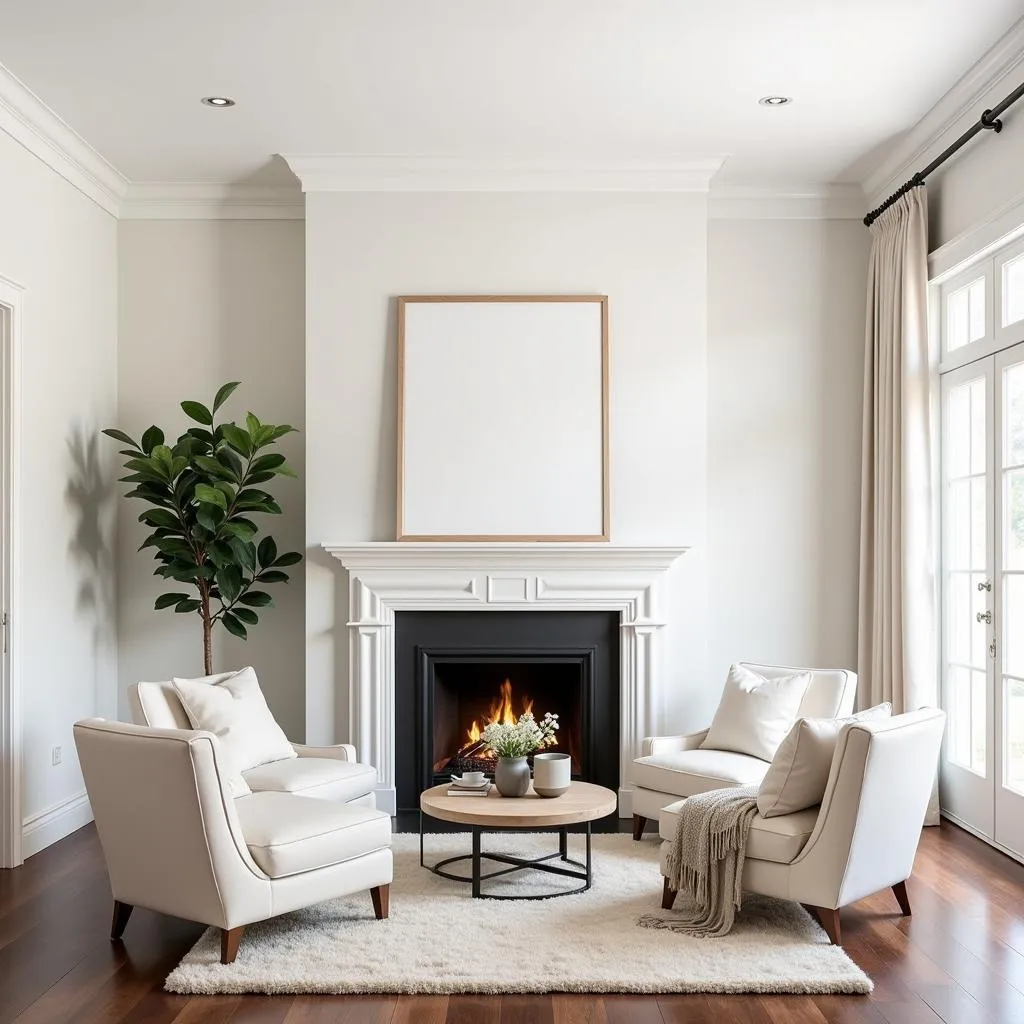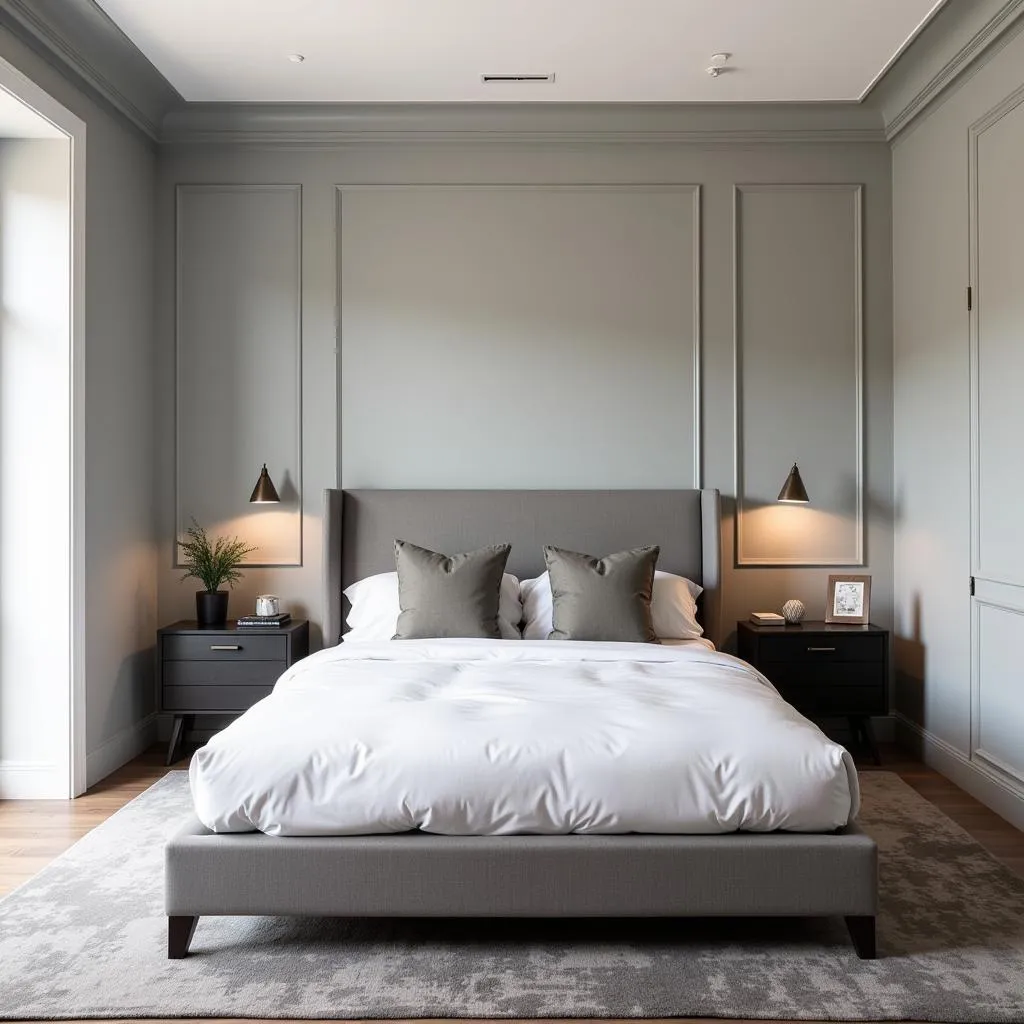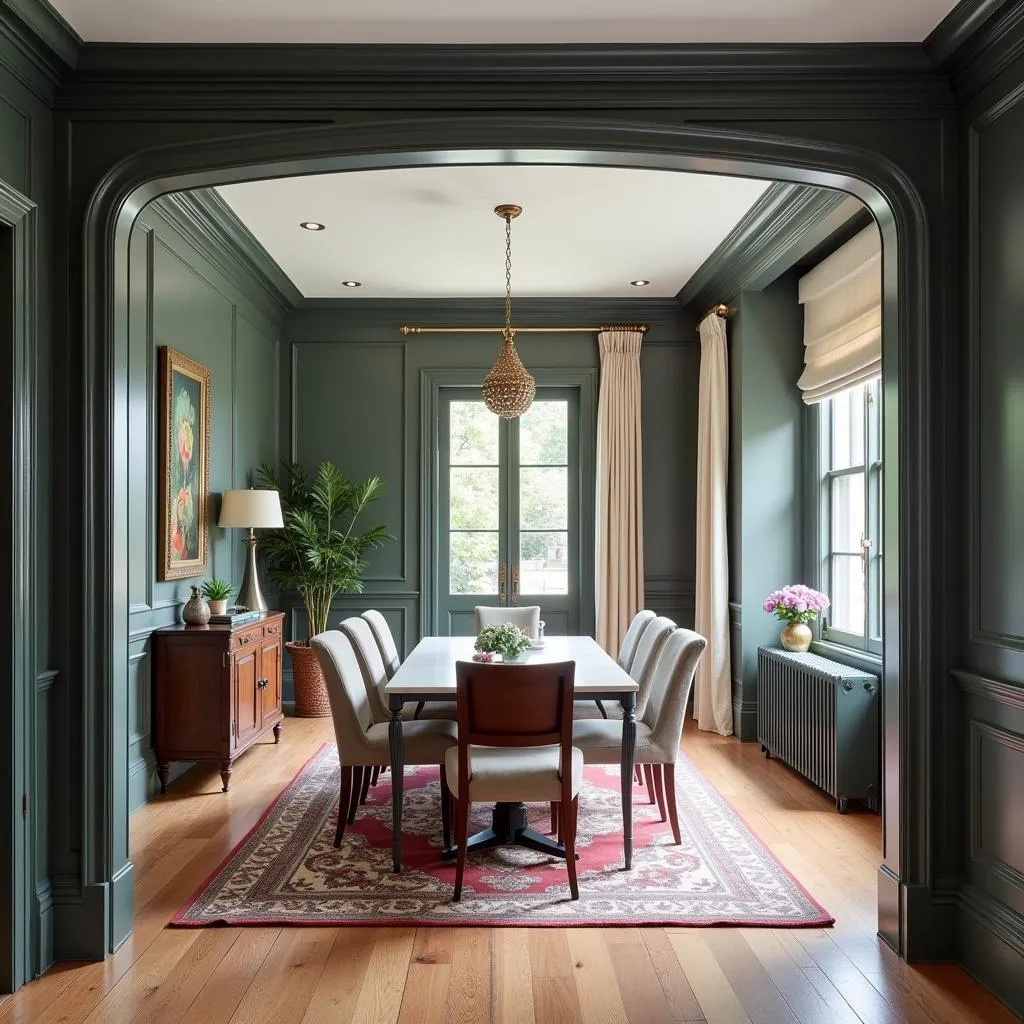Choosing the right color for your crown molding can elevate your interior design from simple to stunning. While it might seem like a small detail, crown molding color can significantly impact the overall feel of a room. Whether you’re aiming for a classic, modern, or eclectic look, this guide will equip you with the knowledge to make informed decisions and achieve the desired ambiance in your home.
Factors Influencing Crown Molding Color Choice
Before diving into specific color recommendations, consider these essential factors:
- Wall Color: The color of your walls plays a crucial role in determining the best crown molding color. Do you want a seamless blend or a contrasting statement?
- Ceiling Color: Similarly, consider the color of your ceiling. A cohesive look might involve matching the crown molding to the ceiling, while a contrasting approach can create visual interest.
- Room Size and Style: Light colors can make a small room appear larger, while darker shades can add coziness to a spacious area. The style of your room also influences color choice—traditional styles often feature classic white molding, while modern spaces might incorporate bolder hues.
- Natural Light: The amount of natural light in a room can affect how colors are perceived. Consider using lighter shades in dimly lit spaces to brighten them up.
Popular Crown Molding Color Options
Let’s explore some popular color choices for crown molding and their effects:
 White crown molding in a classic living room
White crown molding in a classic living room
White: The Timeless Classic
White is a go-to choice for crown molding, and for a good reason. It offers a clean, crisp look that complements various wall colors and design styles.
Pros:
- Versatile and timeless
- Brightens up spaces
- Creates a sense of height
Cons:
- Can feel stark in some settings
- Might require more frequent cleaning
 Matching crown molding in a modern bedroom
Matching crown molding in a modern bedroom
Matching the Walls: Seamless Sophistication
Painting your crown molding the same color as your walls creates a cohesive and sophisticated look. This approach works particularly well in modern and minimalist interiors.
Pros:
- Creates a unified and elegant aesthetic
- Emphasizes wall height subtly
- Works well with bold wall colors
Cons:
- Can lack architectural definition
- Might not be suitable for all room styles
 Contrasting crown molding in a traditional dining room
Contrasting crown molding in a traditional dining room
Contrasting Colors: Bold and Dramatic
For a bolder statement, consider painting your crown molding a contrasting color to your walls. This technique can add drama and architectural interest to a room.
Pros:
- Creates visual impact and depth
- Highlights architectural details
- Allows for creative color combinations
Cons:
- Can be overwhelming if not executed carefully
- Might not be suitable for small spaces
Tips for Choosing the Right Color
- Test paint samples: Before committing to a color, test paint samples on your crown molding and walls to see how they look in different lighting conditions.
- Consider the undertones: Pay attention to the undertones of your wall color and choose a crown molding color with complementary or contrasting undertones.
- Think about the mood: The color of your crown molding can influence the mood of a room. Lighter shades create an airy and spacious feel, while darker hues evoke a sense of coziness and intimacy.
- Don’t be afraid to experiment: Ultimately, the best color for your crown molding is the one that you love and that complements your style and the overall design of your home.
Conclusion
Choosing the right color for your crown molding can significantly enhance the beauty and sophistication of your home. By considering the factors discussed in this guide and exploring various color options, you can create a space that reflects your unique taste and creates the desired ambiance.
Remember, there are no hard and fast rules when it comes to interior design. Trust your instincts, experiment with different ideas, and enjoy the process of transforming your living spaces with the perfect crown molding color.

